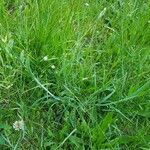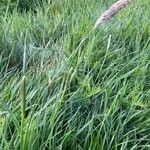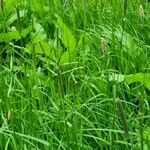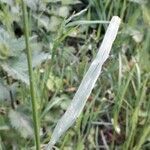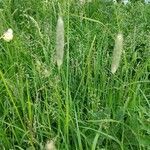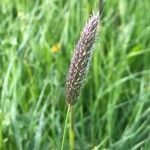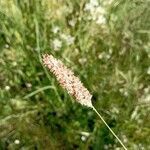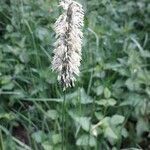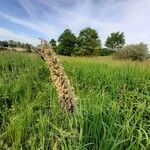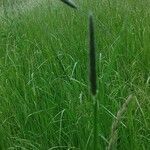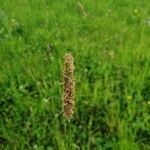Perennial, loosely tufted, shortly rhizomatous. Culms erect, slightly geniculate at base, up to 100 cm tall, 3–5-noded. Leaf sheaths loose, smooth, slightly inflated; leaf blades 5–25 cm, 3–10 mm wide, abaxial surface smooth, adaxial surface scaberulous; ligule 2–4 mm. Panicle cylindrical, 3–8 cm, gray-green. Spikelets elliptic, 4–6 mm; glumes herbaceous, smooth, keels stiffly ciliate, lateral veins shortly pilose, margins connate in lower 1/3, apices acute, slightly convergent; lemma equaling or slightly shorter than glumes, margins connate below middle, awned from lower 1/4, apex puberulous, subacute; awn exserted 3–6 mm from spikelet, weakly geniculate, column not twisted. Anthers yellow, 2–3.5 mm. Fl. and fr. Apr–Aug. 2n = 28.
Perennial 4–8 dm, erect or decumbent at base; infl 2–8 cm × 5–10 mm, scarcely tapering; glumes acute or subacuminate, connate one-fourth their length, 4–5.5 mm, the keel narrowly winged, conspicuously ciliate, especially above the middle, with hairs 1–1.5 mm; awn attached below midlength of the lemma, geniculate near the top of the lemma and exserted 2.3–6.5 mm; anthers 2.2–3.5 mm; 2n=28, 42. Native of Eurasia, naturalized in moist meadows, fields, and waste places nearly throughout our range, and westward.
See Alopecurus pratensis L. subsp. pratensis.
A grass.
